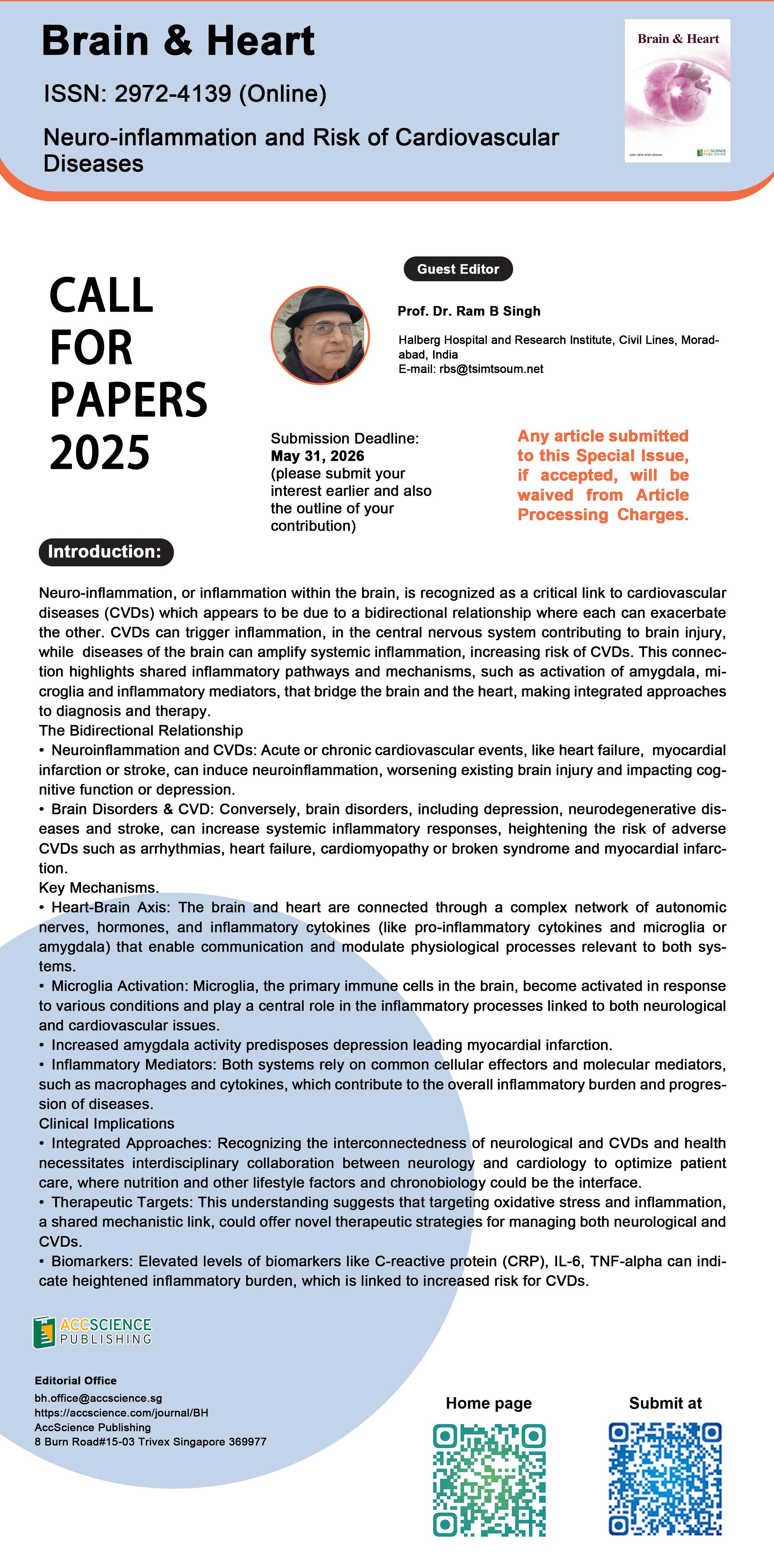News and Announcements
Journal: Brain & Heart
Submission Deadline:
31 May 2026

Special Issue Information
Neuro-inflammation, or inflammation within the brain, is recognized as a critical link to cardiovascular diseases (CVDs) which appears to be due to a bidirectional relationship where each can exacerbate the other. CVDs can trigger inflammation, in the central nervous system contributing to brain injury, while diseases of the brain can amplify systemic inflammation, increasing risk of CVDs. This connection highlights shared inflammatory pathways and mechanisms, such as activation of amygdala, microglia and inflammatory mediators, that bridge the brain and the heart, making integrated approaches to diagnosis and therapy.
The Bidirectional Relationship
- Neuroinflammation and CVDs: Acute or chronic cardiovascular events, like heart failure, myocardial infarction or stroke, can induce neuroinflammation, worsening existing brain injury and impacting cognitive function or depression.
- Brain Disorders & CVD: Conversely, brain disorders, including depression, neurodegenerative diseases and stroke, can increase systemic inflammatory responses, heightening the risk of adverse CVDs such as arrhythmias, heart failure, cardiomyopathy or broken syndrome and myocardial infarction.
Key Mechanisms.
- Heart-Brain Axis: The brain and heart are connected through a complex network of autonomic nerves, hormones, and inflammatory cytokines (like pro-inflammatory cytokines and microglia or amygdala) that enable communication and modulate physiological processes relevant to both systems.
- Microglia Activation: Microglia, the primary immune cells in the brain, become activated in response to various conditions and play a central role in the inflammatory processes linked to both neurological and cardiovascular issues.
- Increased amygdala activity predisposes depression leading myocardial infarction.
- Inflammatory Mediators: Both systems rely on common cellular effectors and molecular mediators, such as macrophages and cytokines, which contribute to the overall inflammatory burden and progression of diseases.
Clinical Implications
- Integrated Approaches: Recognizing the interconnectedness of neurological and CVDs and health necessitates interdisciplinary collaboration between neurology and cardiology to optimize patient care, where nutrition and other lifestyle factors and chronobiology could be the interface.
- Therapeutic Targets: This understanding suggests that targeting oxidative stress and inflammation, a shared mechanistic link, could offer novel therapeutic strategies for managing both neurological and CVDs.
- Biomarkers: Elevated levels of biomarkers like C-reactive protein (CRP), IL-6, TNF-alpha can indicate heightened inflammatory burden, which is linked to increased risk for CVDs.
Keywords
Brain-heart interactions
Gut-brain-heart interactions
Nutrition
Chronobiology
Circadian rhythms


